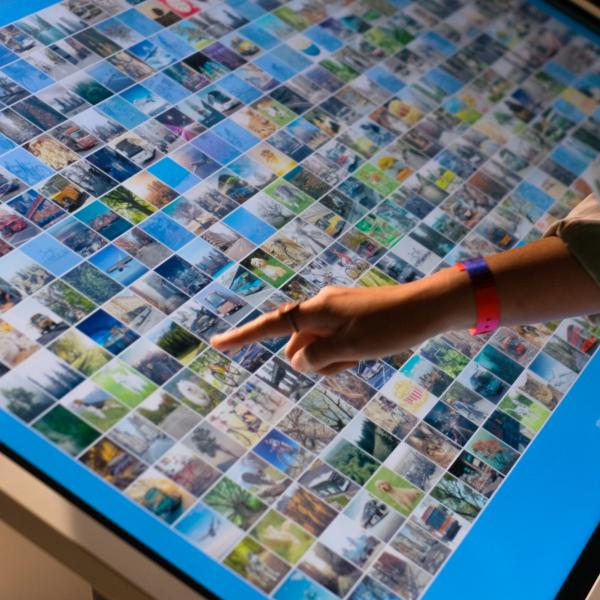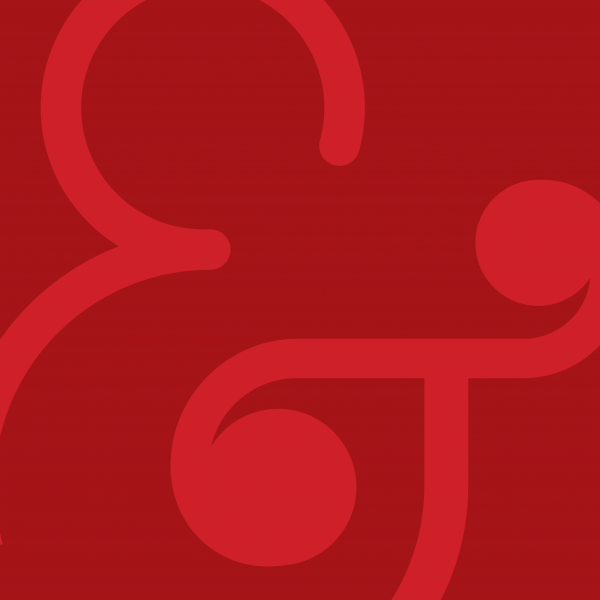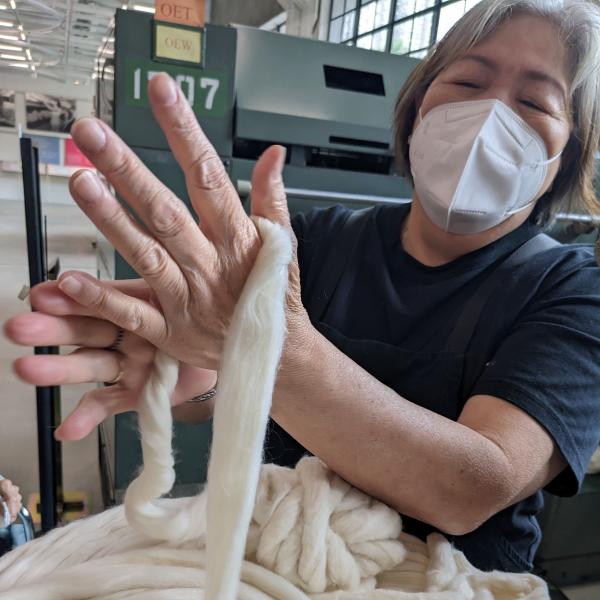In Hyeok Hweon Kang’s "Kitchen, Studio, Factory" class, material culture provides a window into the history of early modern scientific practice in East Asia.

Hyeok Hweon Kang, assistant professor of East Asian Languages and Cultures, studies the material culture of Korea and East Asia, exploring the rise of artisanal science and experimentation in the early modern world. In a new course, “Kitchen, Studio, Factory: Making in East Asia,” Kang invites students to explore craft cultures in all of their forms, from Korean paper artisans to Japanese clockmakers, and then put knowedge into practice by reconstructing a historical artifact.
In this Q&A, Kang talks about the course and the histories built into physical objects.
How did this course come to be?
While putting the course together, I found inspiration from other experimental historians but soon also realized there was none quite like it, at WashU or elsewhere.
Until recently, it’s been difficult to teach a course like this because the field upon which it draws is relatively new: the history of East Asian science and technology. Scholars in this field appreciate how East Asians in the past understood nature and made it work for them. An important strand of the new scholarship has been to examine how artisans made useful things for society, transforming material culture but also the intellectual and cultural realms around them. The course is about uncovering this subtle yet transformative “work” of craftspeople before the modern era. And because the field is young, and students work with materials that are at the cutting edge of new research, the best way for them to learn is to recreate some of the materials themselves. In the class, we employ both a cultural-historical approach and a hands-on, experimental pedagogy to learn by doing.
As the capstone for the course, they undertake a “Rework project.” After identifying a historical recipe, object, or image, students go about reconstructing them — whether by cooking, woodworking, carving, 3D-scanning, or laser-printing. The goal is to uncover and animate the knowledge embedded in the historical artifacts, and to reflect on the hands-on practice by drawing on course readings.
How does material culture play into your research?
Material culture is central to my research on the history of science and technology. In fact, I wrote my doctoral dissertation on the material culture of military workshops in early modern Korea. And now, I am working on a book that examines how Korean artisans developed an experimental approach to material knowledge, which inspired new ways of knowing nature and organizing craft production.
In my work, I try to let material culture speak to me by handling historical artifacts whenever possible. For several years, I have researched artifacts in museums, antique shops, and private collections across the world, primarily in South Korea but also Japan, Portugal, Netherlands, and the United States. I learned so much by personally holding the pieces, weighing, measuring, photographing, and in rare occasions, by taking them apart. Once, I disassembled an 18th-century Korean gun, discovering a series of artisan names otherwise hidden under the stock.

We spoke of the importance of tacit knowledge in class. What does tacit knowledge mean in relation to the cultural life of objects?
Tacit knowledge is implicit knowledge that is embodied in human action, acquired through the senses and experience and activated by the material properties of the world around us. It’s like knowing when your pasta is al dente or whether your plant needs watering after touch-testing the soil. Tacit knowledge is important because it’s one of a few ways we can learn the truth about historical artifacts — how they were made, for whom by whom, and why. Of course, until someone invents a time machine, we can never truly understand, and historical documents can only tell us so much. Yet, with some skill and purposeful experimentation, we can learn a lot by working with our hands and thinking backwards from objects to their makers, material culture to society.
What kinds of projects did students pursue? Can you give some interesting examples?
Every project is enlightening in its own way, and because the students take logs, photos and videos of their practices, we launched a website to exhibit them properly: www.kitchenstudiofactory.com. Some students cooked centuries-old recipes, others made 3D models of historical workshops, and still others made fences, distillers, clothing, medicines, and cosmetics. At the end of this semester, many more will be added to the mix, ranging from Chinese folding fans and Korean desserts to Japanese candlestick holders and a tea-serving “robot.”
What do you hope students will take away from this class?
By the end of the semester, students become “artisans” in their own right. Surely, we are not sufficiently skilled — and never will be without years of practice. But we begin to know what it’s like to learn by doing. We also try and think like a practitioner, developing our skill of reflecting on hands-on practice and of uncovering material imaginaries of bygone craft cultures.
Yet the course is not just about recovering the past. Towards the end, I lead students to reflect on the present, recognizing the modern-day “artisans” in East Asia who can mass-produce Van Gogh paintings by hand or rework iPhones and Macbooks. But more than anything, I learn from the students on how to might make what seems remote and irrelevant — premodern craft culture — valuable to us now.
One of my most rewarding experiences has been to see students carry out concepts like “tacit knowledge,” “rework,” and “imitation as invention” in their lives and into other learning environments. One student wants to conduct research about the role of skill and craft in modern film industries. Another will transform urban St. Louis by building Japanese bamboo fences. Finally, students tell me that during the end of a busy semester filled with essays and exams, taking some time away from the screen — to cook, bake, carve, etc. — is important and rewarding for us all.




